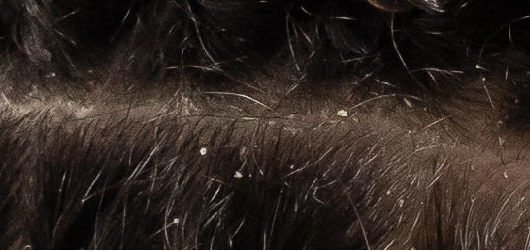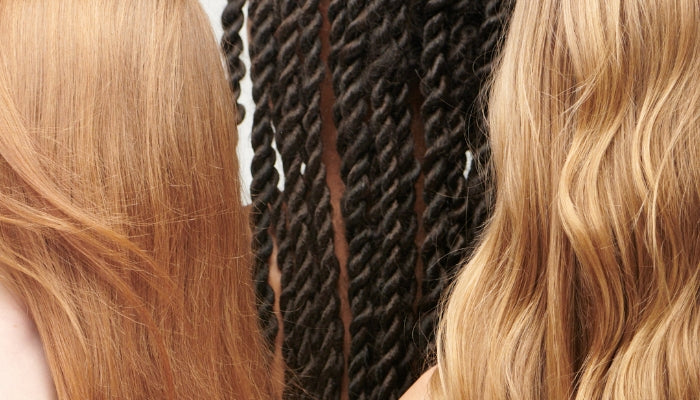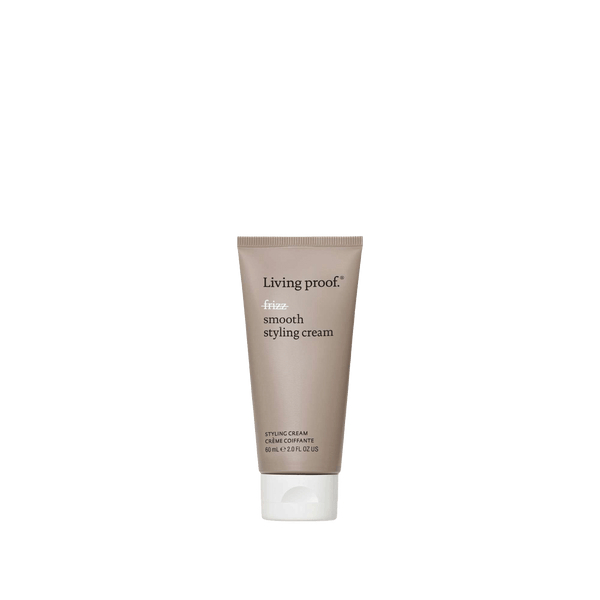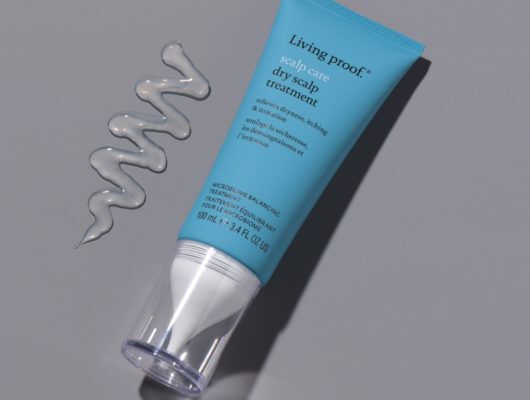How to Remove Hair Buildup

Hair buildup is a problem that can have you scratching your scalp. If you’re experiencing hair buildup, you may have one or more of these conundrums lingering in your thoughts:
- My scalp feels oily, but my hair is dry.
- My scalp feels dry, yet it doesn’t feel clean.
- I’m piling on conditioning products, but my hair is as lifeless as ever.
These paradoxes can make it challenging to identify the actual problem at hand—or, rather, at the scalp. Today, we’ll take a microscope to the issue of hair buildup: what it is, what causes it, and how to identify it. Then, we’ll explore how buildup affects different hair types—and address solutions like a detox shampoo to help you wash it away for good.
What is hair buildup?
Buildup is the accumulation of products, pollutants, minerals, or oils on your hair and scalp. Many of these substances aren’t part of the natural composition of your hair or scalp, so the skin and hair don’t readily absorb them. Instead, this type of buildup lingers on the scalp and hair and can lead to clogged pores, blocking nutrients and depriving your hair of its natural beauty.
The elements that can build up in hair vary widely, so let’s take a closer look at the origins of each one:
- Products – Products containing silicone and other chemicals are the primary cause of hair buildup. Product buildup can accumulate on your hair and scalp over time, leaving your hair feeling dry and brittle, even if the products promise to add moisture and nutrients.
- Pollutants – Your hair and scalp can collect pollutants in the air that can actually live on your head and in your hair even after washing it. Pollutants like dust and smoke can cling to your hair, reducing shine and vibrancy. Recent studies have shown pollutants can impact the hair follicle, contributing to hair loss.
- Minerals and heavy metals – Minerals can be good, but too many of them can bog down your hair, causing what’s known as hard water hair. Hard water from your bath or shower is a primary source. Calcium, magnesium, and heavy metals like iron and copper ions found in hard water can collect on your hair over time, causing oxidative damage to the proteins in your hair.
- Oil – Dryness associated with product buildup on the scalp can result in your scalp’s creation of more oil, called sebum. When your scalp becomes more oily, most people’s first instinct is to wash it more. But regular shampoo can sometimes strip the scalp of sebum, so sebum production only increases. The result could be a seemingly endless tug-of-war between sebum and suds.
- Scalp conditions – Some skin conditions like psoriasis and seborrheic dermatitis can cause more complex scalp and hair buildup. Dead skin cells can build up and layer on top of each other to form plaques. When signs of these arise, especially flaky scalps, consider working with a dermatologist to formulate the right treatment to remedy the underlying health condition

What causes hair buildup?
As we discussed above, hair buildup can result from a variety of different elements. In turn, there are five consequential ways in which hair buildup actually happens:
- Product residue that doesn’t wash out with regular water and soap.
- The inevitable absorption of external pollutants in everyday life.
- Excess exposure to minerals and heavy metals like those found in hard water.
- Your body’s natural process of fighting dryness with sebum.
- Certain dermatological health conditions, like psoriasis.
Some of these causes are unavoidable or depend on your environment and everyday exposures. However, with the right understanding of your hair and scalp’s natural chemistry, there are ways to remedy many of the causes.
How do you know if your hair has buildup?
You might be wondering if the hair issues you’re experiencing are actually buildup or whether it’s something else.
Buildup can be tricky to pinpoint, given the many chemicals and elements your hair is exposed to daily.
But not to worry—we’ve narrowed it down for you. Here are some signs that your hair may be bogged down with buildup:
- An oily scalp coupled with dry hair
- Hair that appears dull
- Hair that feels heavy
- Hair that feels rough
- Hair that feels unclean, even after washing
- Uncharacteristic dandruff or a very dry scalp
If you resonate with any of these conditions, take a mental inventory of the products you’ve recently used on your hair and scalp. If some or all of them contain silicones or aim to nourish hair without seeing any results, product buildup in hair could likely be the cause.
Buildup on different hair types
Just as your curvy curls or ruler-straight locks are totally unique to you, no hair or scalp is created equal. Any kind of natural hair can fall victim to product buildup.
We know and celebrate every nuanced hair type—but to keep it simple, we’ll take a look at a few common hair types regarding hair thickness:
- Fine hair – When the scalp creates sebum, the excess oil may be very visible on fine hair. A common mistake for folks with fine hair is loading it with products that promise to volumize and thicken it. Some of these products can contain silicones and styling polymers that can be difficult to wash off of your hair. When you try washing more, your scalp produces more oil to combat dryness. Hair product buildup and extra sebum can leave your hair weighed down and lifeless.
- Medium hair – Medium hair can do a better job of hiding oil. But on the flip side, because there is more surface area to each singular hair strand, medium hair may hold on to more products, pollutants, and other unwanted elements. As a result, medium hair can feel dull and lifeless as films of buildup coat the hair shaft, blocking hydration and nutrients.
- Coarse hair – While many hair types can experience the feeling of heaviness if dealing with hair buildup, coarse hair may experience it the most. The thickest strands will hold onto the greatest amount of excess product and other elements, making hair feel heavy, dry, and brittle. On coarse hair, buildup can take the bounce out of the most energetic curls.
Keep in mind that buildup takes shape differently for every hair type. Depending on your unique hair texture, porosity, and thickness, you may have different combinations of these hair buildup indicators.

How to clear hair buildup
With an intelligently-formulated solution, clearing hair buildup is possible. With special attention to ingredients, a buildup fighting routine, and a little patience, you can be on your way to revitalized, balanced, buoyant hair.
Take a look at these four pro tips for clearing hair buildup.
#1 Use a clarifying shampoo
To start, you’ll want to use a deep cleansing shampoo or clarifying shampoo designed to strip away the extra buildup on the hair and scalp.
For example, Living Proof’s clarifying detox shampoo is bioengineered to remove buildup from products, pollutants, and hard water. For optimal results, use clarifying shampoo once per week to wash out any residue hanging on from the week’s adventures. Considering following up with a leave-in dry scalp treatment to soothe scalp irritation caused by product buildup.
#2 Look for chelating agents
A chelating agent is a compound that binds to heavy metals like the ones found in hard water that can damage your hair and scalp. A chelating agent is a key ingredient you’ll want to look for when searching for clarifying shampoos and products.
Hair chelating, the process of removing mineral build-up from hair can be done professionally or at home.
#3 Stay away from silicones and sulfates
To stay diligent in your quest for buildup-free hair, you’ll want to review the ingredients of new haircare products moving forward.
Avoid any products with silicones, as these can contribute to the buildup on your locks. Sulfates, while great detergents, can strip the hair and scalp, resulting in excess oil production. Trust us—it’ll be worth the extra few minutes spent reading labels.
Instead, look for products that support your hair and scalp with hydrating ingredients that won’t weigh you down.
#4 Follow up with balancing conditioners
Once you’ve gone to the effort of removing hair buildup, it won’t do to use conditioners and other products that take you back to square one. Instead, look for conditioners that offer strength and hydration without the heaviness.
Just like your shampoo, aim to avoid silicones that tend to stick around. Instead, look for conditioners that contain:
- Protection from pollutants and environmental damage
- Emollients to lock in moisture
- Polymers to help style and protect
Free your hair from buildup with Living Proof®
Hair buildup is an issue people with all different hair types can experience. The enabling factors are seemingly endless, and the effects can be overwhelming. But understanding a little more about what’s happening to our hair can lead to real, effective solutions.
Living Proof brings you haircare that sorts out the science—so you don’t have to. We believe that haircare should be just that: care for your hair that makes a difference.
Our experts in chemistry carefully formulate each product to work safely and effectively. We back up every claim we make to restore and rejuvenate your hair—so you can trust that what goes on your hair and scalp will leave your hair healthy.
Sources
- International Journal of Trichology. Essentials of Hair Care often Neglected: Hair Cleansing. https://www.ncbi.nlm.nih.gov/pmc/articles/PMC3002407/
- International Journal of Trichology. Oxidative Stress in Ageing of Hair. https://www.ncbi.nlm.nih.gov/pmc/articles/PMC2929555/
- National Library of Medicine. The Shampoo pH can Affect the Hair: Myth or Reality https://www.ncbi.nlm.nih.gov/pmc/articles/PMC4158629/
- International Journal of Trichology. Hair Cosmetics: An Overview. https://www.ncbi.nlm.nih.gov/pmc/articles/PMC4387693/
- Kwon, Hyuk Chul (2019, October) Research presented at the 28th EADV Congress in Madrid.
- Grosvenor AJ, Marsh J, Thomas A, Vernon JA, Harland DP, Clerens S, Dyer JM. Oxidative Modification in Human Hair: The Effect of the Levels of Cu (II) Ions, UV Exposure and Hair Pigmentation. Photochem Photobiol. 2016 Jan-Feb;92(1):144-9. doi: 10.1111/php.12537. Epub 2015 Nov 5. PMID: 26451514.
- Genesis Career College. 8 Ingredients to Avoid in your Shampoo and Conditioner. https://www.genesiscareer.edu/8-ingredients-to-avoid-in-your-shampoo-and-conditioner/
- National Library of Medicine. Essentials of Hair Care often Neglected: Hair Cleansing. https://www.ncbi.nlm.nih.gov/pmc/articles/PMC3002407/
- Tags: Hair Health











